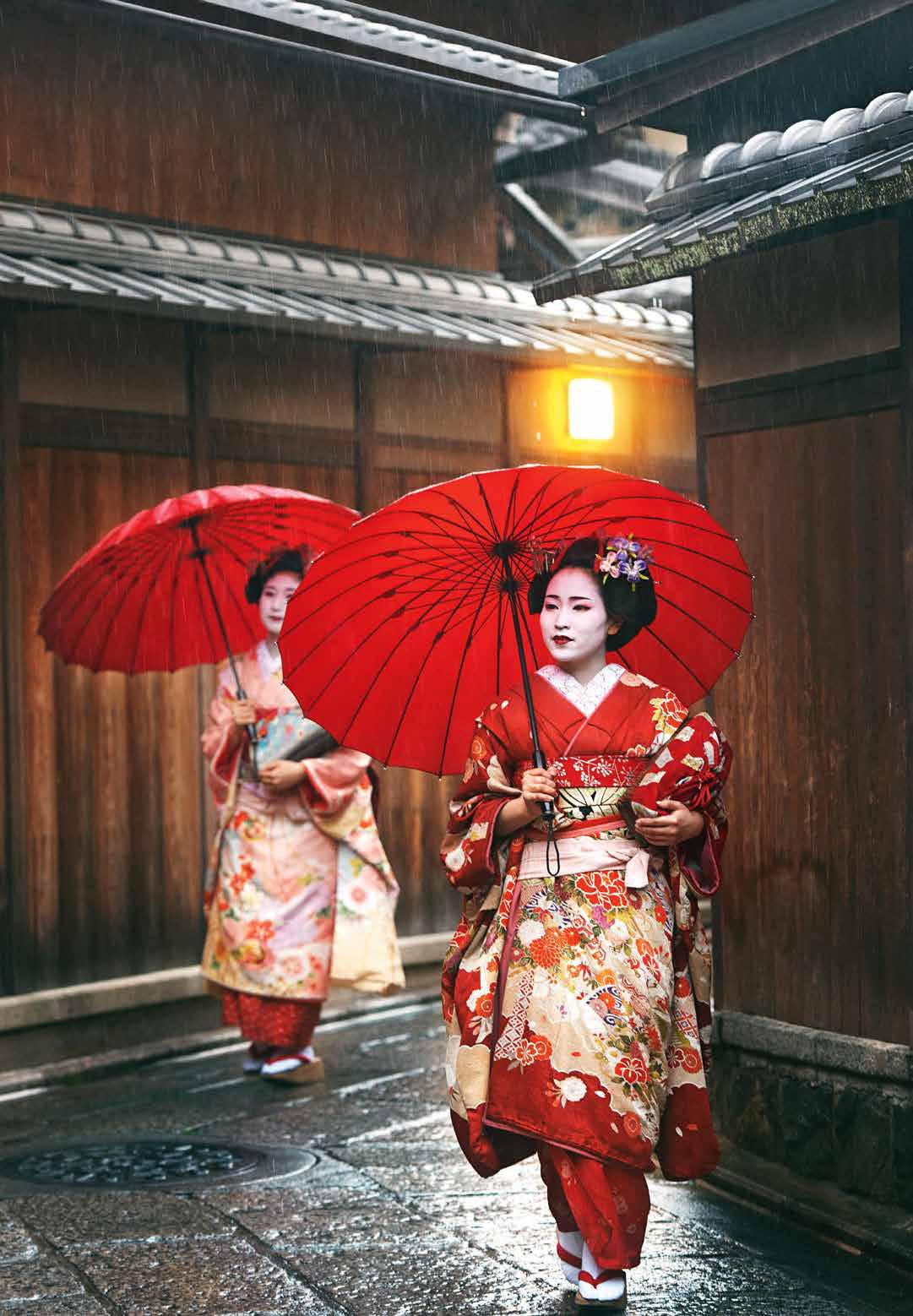Where life imitates art

In the 21st century it’s hard to believe that an ancient interpretation of womanhood, bound by strict codes of conduct and anachronistic ideals of perfection, continues to survive in the same nation that recently topped the most technologically advanced in the world.
But painted geisha (or ‘geiko’ as they are called in Kyoto) swaddled in richly coloured silk kimonos, shuffling perilously on platform ‘okobo’ (wooden clogs) beneath elegant parasols, their rosebud ruby lips, white faces and intricate hairdos the result of hours of preparation, are still hanging in there as the enigmatic jewel of Japanese culture … just!
Certainly the number of geisha still working is waning fast, but as the global popularity of a peppy new Netflix TV drama, The Makanai: Cooking for the Maiko House, has proved, fascination with this secretive community is just as strong as ever.
The golden age of geisha was in the Edo period from 1603 to 1867 and even back in the 1920s there were around 80,000 geisha operating in Japan. But times have changed and today there are barely 600 across the nation.
Feminism undoubtedly played its part; the glamour and appeal of a culture that locks women into a codified conduct has worn thin, and unsurprisingly the geisha world is one teetering on extinction.
But it is precisely the potential disappearance of this idiosyncratic iteration of living art that makes any insight into its culture all the more enticing. Japan reveres its geisha and cares little that the western world doesn’t really get it. These beautiful creations are the embodiment of a culture that sets their nation apart, even on a higher plane – though this depends on your point of view ...
Denne historien er fra July 2023-utgaven av Australian Women’s Weekly NZ.
Start din 7-dagers gratis prøveperiode på Magzter GOLD for å få tilgang til tusenvis av utvalgte premiumhistorier og 9500+ magasiner og aviser.
Allerede abonnent ? Logg på
Denne historien er fra July 2023-utgaven av Australian Women’s Weekly NZ.
Start din 7-dagers gratis prøveperiode på Magzter GOLD for å få tilgang til tusenvis av utvalgte premiumhistorier og 9500+ magasiner og aviser.
Allerede abonnent? Logg på

How to boost the value of your home
Whether you're looking to sell now or later down the track, it really pays to keep your house up to date.

The magic of manifesting
While it sounds woo-woo, putting your mind to what you want might be the key to turning your dreams into reality.

A quiet killer
Difficult to detect, ovarian cancer is silently taking the lives of women. Here's what you need to know.

Air fryer snacks
The air fryer makes cooking so simple. From healthier versions of fried favourites to baked treats, these easy recipes are made to enjoy!

The billiondollar world of astrology
Astrology is back. Celebrities won't make a move without consulting their charts and everyone knows someone who's retraining as an astrologer. The Weekly investigates the current fascination with the stars.

The shape shifters
Contouring with make-up is a clever hack for instant facial definition.

"I'm a professional baby cuddler!"
When Jenny Summerson’s own children grew up, she looked for something to fill the hole in her life. What she found were babies who needed a little extra TLC.

Princess Catherine THE REALITY OF A NEW NORMAL
After the hardest year of her life and as she finds her footing in a post-treatment world, the dutiful princess could be preparing for her ultimate role- but this time it's on her terms.

Put it in neutral
Far from middle of the road, neutral tones can really add interest and sophistication to your home. Here's how to nail it.

QUEEN OF COMEDY The Marvellous Ms Margolyes
Speaking her truth in a delightfully wicked and candid manner we've come to cherish, British actress Miriam is now telling the world how she has fallen in love with New Zealand.
